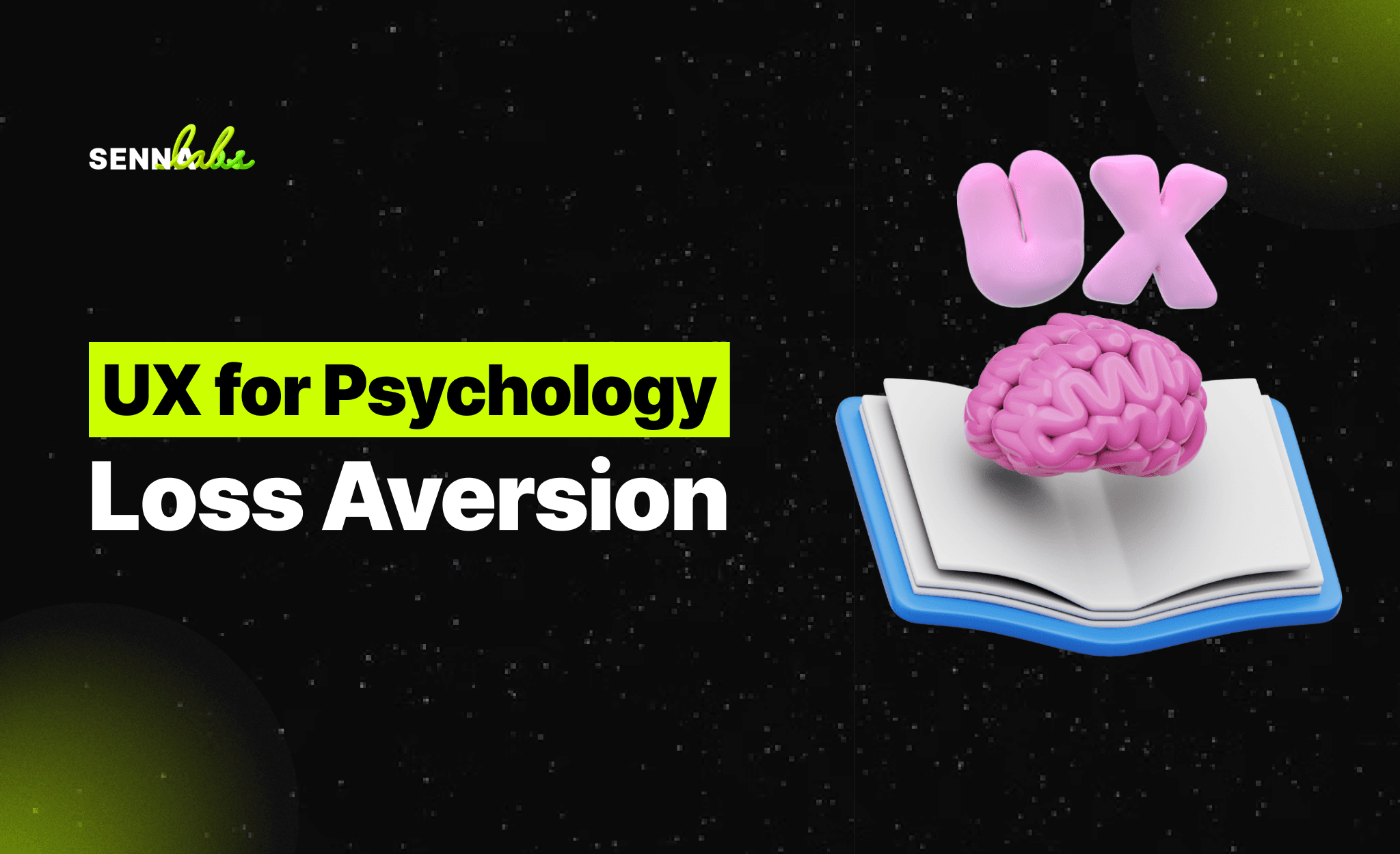Empathy in User-Centered Design: Understanding the User's Journey

Empathy is at the core of effective user-centered design (UCD). It involves stepping into the user’s shoes, understanding their experiences, emotions, pain points, and frustrations, and using these insights to create designs that truly resonate with them. Rather than making assumptions about what users need, empathetic design is rooted in actual user experiences, leading to products that are not only functional but also meaningful and satisfying.

In this article, we will explore the role of empathy in user-centered design and how understanding the user’s journey is essential to creating successful mobile applications. We will also examine a real-world use case where a healthcare appimproved its onboarding process by incorporating user personas based on patient feedback, resulting in a more accessible and user-friendly experience for older users.
The Importance of Empathy in User-Centered Design
Empathy is more than just understanding users on a superficial level—it’s about developing a deep emotional connection with their journey. Designers who practice empathy aim to see the world from the user's perspective, recognizing their challenges and motivations. This empathetic approach allows designers to make informed decisions that directly address user needs and enhance the overall experience.
When empathy is applied in user-centered design, the following benefits emerge:
-
Better Solutions: By understanding the user's pain points, designers can create solutions that solve real problems instead of relying on assumptions.
-
Enhanced Usability: Empathy ensures that the app is easy to use for everyone, including people with diverse needs, abilities, and preferences.
-
Stronger User Engagement: When users feel that an app is designed with their specific needs in mind, they are more likely to engage with it, leading to higher retention and satisfaction.
Understanding the User's Journey: Key to Empathy
The user’s journey refers to the entire experience a person has while interacting with an app, from the moment they first learn about it to completing key tasks within the app. Understanding this journey is essential for uncovering friction points, identifying areas for improvement, and ultimately designing an app that aligns with the user’s goals and expectations.
To truly grasp the user’s journey, designers often engage in activities such as:
-
User Interviews: Speaking directly to users to gather insights about their behaviors, motivations, and challenges.
-
Surveys: Collecting quantitative data on user preferences, pain points, and feature requests.
-
Persona Creation: Developing detailed user personas that represent the key characteristics, goals, and frustrations of different user groups.
-
Journey Mapping: Creating visual maps that outline the steps users take when interacting with the app, highlighting potential frustrations or pain points along the way.
By thoroughly understanding the user’s journey, designers can create experiences that resonate on an emotional level and meet the user’s practical needs.
Best Practices for Incorporating Empathy in Design
To design with empathy, it’s essential to gather user insights, create solutions that address real-world challenges, and continuously test and refine designs based on user feedback. Below are several best practices for incorporating empathy into the user-centered design process:
1. Conduct In-Depth User Research
The foundation of empathetic design is understanding your users. In-depth research—through interviews, focus groups, or usability testing—provides the insight needed to create designs that reflect the user's true needs.
Best Practice: Interview users from different demographics, experience levels, and abilities to gain a comprehensive understanding of the full range of user experiences. Ask open-ended questions to uncover emotional responses, frustrations, and motivations that may not be immediately apparent.
2. Create User Personas Based on Real Feedback
User personas are fictional representations of your ideal users, grounded in real research and data. They help guide design decisions by focusing on the needs, behaviors, and goals of specific user groups. When personas are based on real feedback, they provide designers with a clear, empathetic understanding of the different types of users interacting with the app.
Best Practice: Develop personas that go beyond basic demographics and include emotional and psychological insights. For example, a healthcare app might create a persona for an older user who is anxious about using digital tools and another for a younger user who prioritizes efficiency and speed.
3. Identify Pain Points and Frustrations
Understanding the specific pain points that users encounter while interacting with an app is key to creating a more empathetic design. These pain points might include confusing navigation, lengthy onboarding processes, or complex interactions that prevent users from completing tasks efficiently.
Best Practice: Map out the user's journey to identify moments of friction or frustration. For example, a financial app might find that users struggle to navigate between checking their balance and making payments, leading to confusion and drop-offs.
4. Design for Accessibility
Empathy in design also means considering users with different abilities, ensuring the app is accessible to everyone, including those with disabilities or unique needs. This could involve designing for vision impairments, motor skill limitations, or cognitive challenges.
Best Practice: Include accessibility features such as adjustable font sizes, voice support, screen reader compatibility, and color contrast options. Consider diverse user groups during the design process, ensuring that all users, regardless of ability, can interact with the app smoothly.
5. Continuously Test and Iterate
Empathy in design doesn’t end once the app is launched. To maintain an empathetic approach, designers should continuously gather user feedback and conduct usability testing to identify areas for improvement. Testing ensures that the app continues to meet user needs as they evolve.
Best Practice: Regularly conduct usability tests with real users and analyze their feedback to refine the design. For example, after rolling out a new feature, observe how users interact with it and adjust the design based on their behavior and comments.
Real-World Use Case: Improving Onboarding in a Healthcare App Through Empathy
Let’s examine a real-world use case where a healthcare app improved its onboarding process by incorporating empathy-driven design practices.
The Challenge
The healthcare app initially received feedback from older users that the onboarding process was too complex and difficult to navigate. Many users, especially those unfamiliar with mobile technology, struggled to set up their health tracking features, leading to frustration and abandonment of the app.
The Solution: Creating User Personas and Redesigning Onboarding
The design team conducted a series of user interviews and surveys, focusing on older patients who had difficulty using the app. By understanding their concerns and frustrations, the team developed several user personas that highlighted the needs of older users with limited technical experience.
Based on these personas, the team redesigned the onboarding process with empathy and ease of use in mind:
-
Simplified Onboarding Flow: The app introduced a step-by-step guide that walked users through each feature one at a time, with clear instructions and visual cues. This made the process more approachable and reduced the cognitive load on new users.
-
Interactive Tutorials: Instead of overwhelming users with all the app’s features at once, the onboarding process used progressive disclosure, revealing only the most essential features upfront, while providing interactive tutorials for more advanced functions later.
-
Personalized Guidance: The onboarding process was personalized based on user needs. For example, users could indicate whether they wanted to track specific health metrics (such as blood pressure or weight), and the app adjusted the setup accordingly.
The Results
After the empathetic redesign, the app saw significant improvements in usability and engagement:
-
Increased Accessibility: Older users found the onboarding process easier to navigate, leading to higher completion rates during setup.
-
Reduced Abandonment: The simplified onboarding flow reduced drop-off rates, as users felt more comfortable interacting with the app and understanding how to use it.
-
Improved User Satisfaction: Feedback from users indicated that the app was now more intuitive and accessible, particularly for those who were less familiar with mobile technology.
Conclusion
Empathy is an essential component of user-centered design, guiding designers to create products that address real user needs and solve real problems. By understanding the user’s journey, including their frustrations, motivations, and goals, designers can build mobile apps that resonate on an emotional level and provide meaningful, user-friendly experiences.
As demonstrated by the healthcare app in our use case, incorporating empathy into the design process—through user research, persona development, and simplifying complex tasks—can significantly improve accessibility, engagement, and user satisfaction. For any mobile app, designing with empathy is key to building lasting relationships with users and ensuring long-term success.


Subscribe to follow product news, latest in technology, solutions, and updates
Other articles for you



Let’s build digital products that are simply awesome !
We will get back to you within 24 hours!Go to contact us Please tell us your ideas.
Please tell us your ideas.







